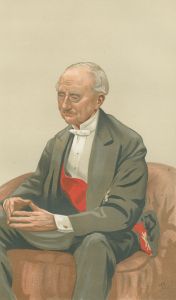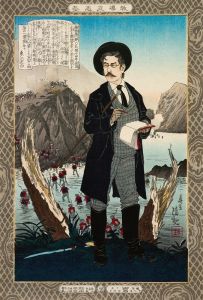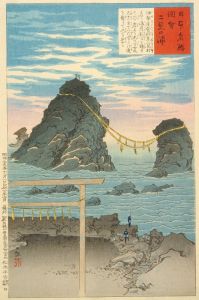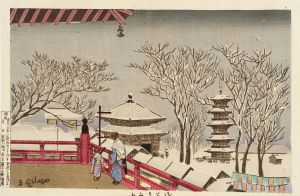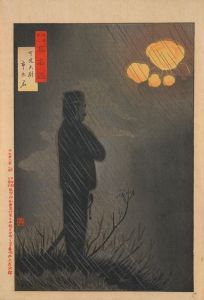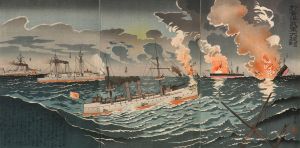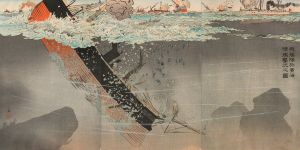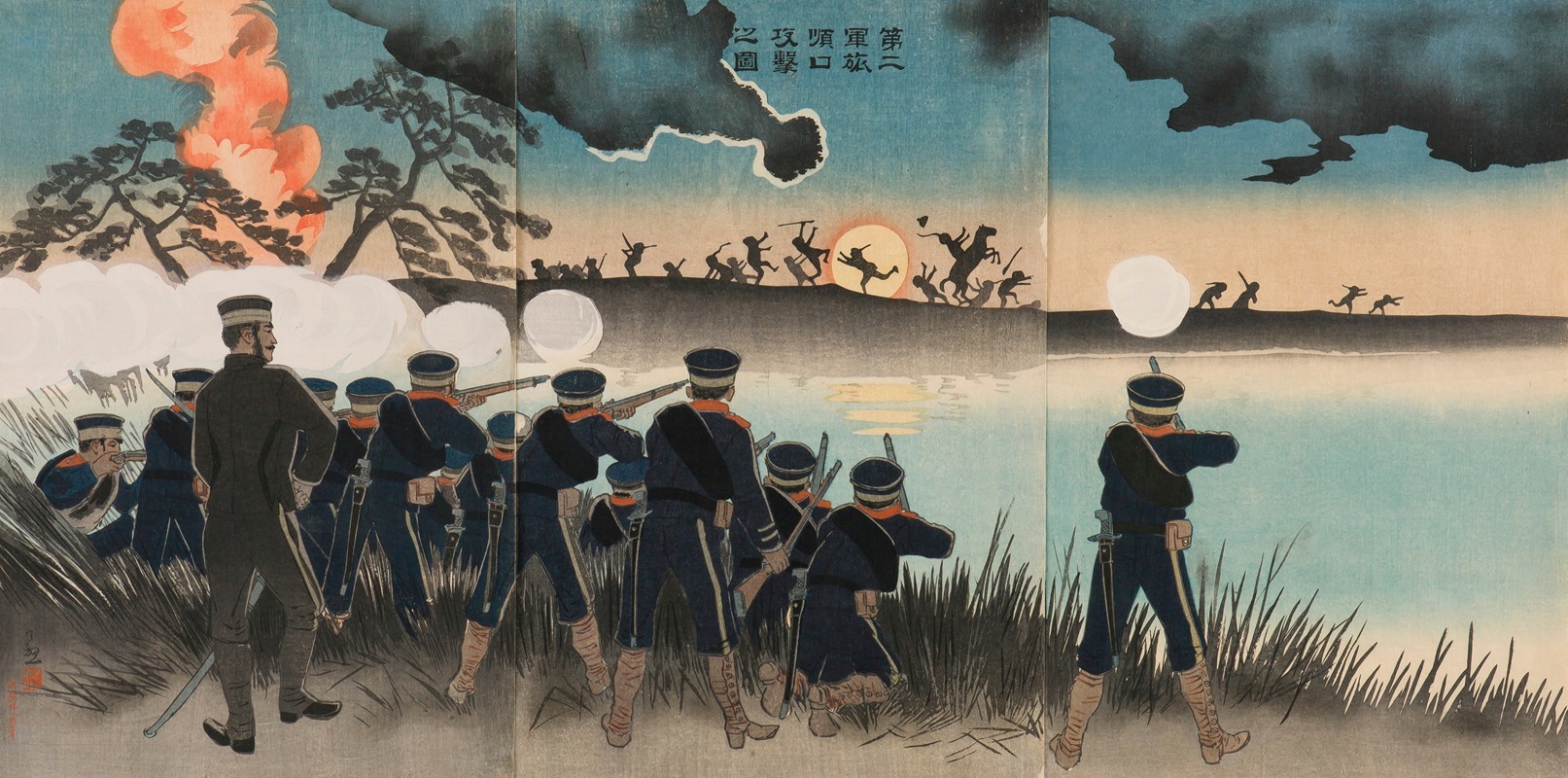
The Second Army’s Assault on Port Arthur
A hand-painted replica of Kobayashi Kiyochika’s masterpiece The Second Army’s Assault on Port Arthur, meticulously crafted by professional artists to capture the true essence of the original. Each piece is created with museum-quality canvas and rare mineral pigments, carefully painted by experienced artists with delicate brushstrokes and rich, layered colors to perfectly recreate the texture of the original artwork. Unlike machine-printed reproductions, this hand-painted version brings the painting to life, infused with the artist’s emotions and skill in every stroke. Whether for personal collection or home decoration, it instantly elevates the artistic atmosphere of any space.
"The Second Army’s Assault on Port Arthur" is a woodblock print created by the Japanese artist Kobayashi Kiyochika during the First Sino-Japanese War (1894–1895). Kiyochika, known for his ukiyo-e prints and his depictions of modern warfare, produced this work as part of a series of prints that documented Japan's military campaigns during the conflict. The print illustrates a scene from the Siege of Port Arthur, a significant battle in the war, where Japanese forces captured the strategically important port city from the Qing Dynasty of China.
The artwork reflects Kiyochika's distinctive style, which combines traditional Japanese woodblock printing techniques with Western influences, particularly in the use of perspective and shading. This fusion of styles was characteristic of his work during the Meiji era, a period marked by Japan's rapid modernization and adoption of Western technologies and artistic methods. The print captures the intensity of the battle, with Japanese soldiers advancing under fire, emphasizing the discipline and determination of the Japanese military.
The Siege of Port Arthur, which took place in late 1894, was a pivotal moment in the First Sino-Japanese War. The Japanese Second Army, under the command of General Ōyama Iwao, launched a coordinated assault on the heavily fortified port, which was a key naval base for the Qing forces. The Japanese victory at Port Arthur not only demonstrated their military superiority but also marked a turning point in the war, leading to Japan's eventual triumph and the signing of the Treaty of Shimonoseki in 1895.
Kiyochika's print serves as both a historical record and a piece of wartime propaganda, celebrating Japan's military achievements and fostering national pride. Like many of his contemporaries, Kiyochika used his art to convey the narrative of Japan's emergence as a modern, powerful nation on the global stage. The vivid imagery and dramatic composition of "The Second Army’s Assault on Port Arthur" reflect the patriotic fervor of the time and the artist's skill in capturing the dynamics of modern warfare.
Today, the print is regarded as an important example of Meiji-era art and is studied for its historical and artistic significance. It provides insight into how Japanese artists of the period responded to the rapid changes in their society and the impact of those changes on their work.





